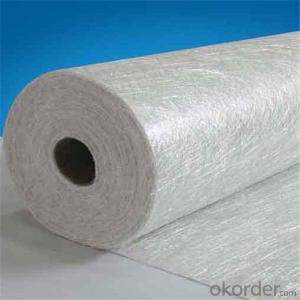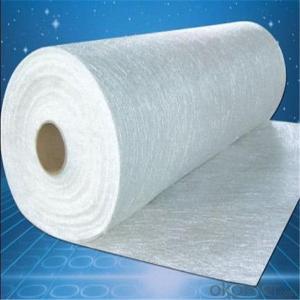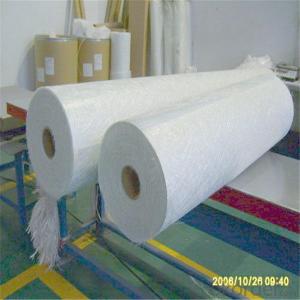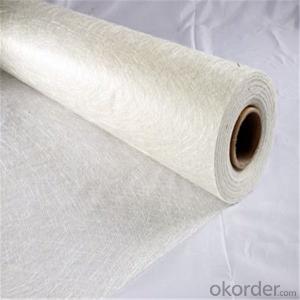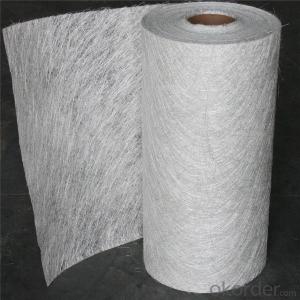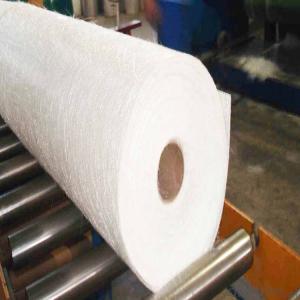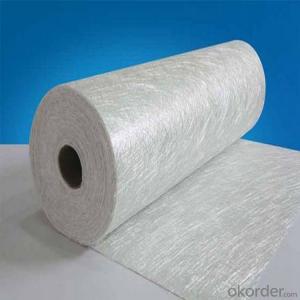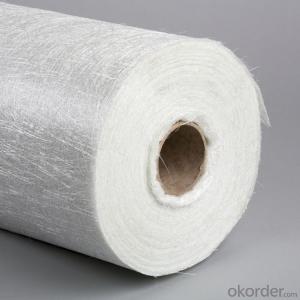Flame Retarded Chopped Strand Fiberglass Mat
- Loading Port:
- Tianjin
- Payment Terms:
- TT OR LC
- Min Order Qty:
- 100 m.t.
- Supply Capability:
- 10000 m.t./month
OKorder Service Pledge
OKorder Financial Service
You Might Also Like
Quick Details
| Technique: | Chopped Strand Fiberglass Mat (CSM) | Dimensions: | 80g - 900g | Mat Type: | Continuous Filament Mat |
| Fiberglass Type: | E-Glass | Softness: | soft, very soft | Place of Origin: | Shandong, China (Mainland) |
| Brand Name: | cnbm | Model Number: | CSM | material: | fiberglass |
| Glass type: | E glass / C glass | Bond type: | powder or emulsion | Roll width: | 200 - 2600mm |
| Roll weight: | 28 - 55kgs | Density: | 225g/m2, 300g/m2, 450g/m2 | Certification: | ISO, CE |
Packaging & Delivery
| Packaging Details: | standand export packing . or packed as customer's need |
| Delivery Detail: | 10-20days after the contract is effective |
Specifications
Fiberglass Chopped Strand Mat
1.good combination fo resin
2.easy operation
3.good wet strength retention
Specification:
Fiberglass Chopped Strand Mat is an non-woven E- or C-glass fiberglass fabric manufactured by spreading continuous filament rovings of 50mm in length randomly and uniformly in combination with polyester binder in power form (or other binder in emulsion form). Powder or Emulsion fiberglass fiber chopped glass mat

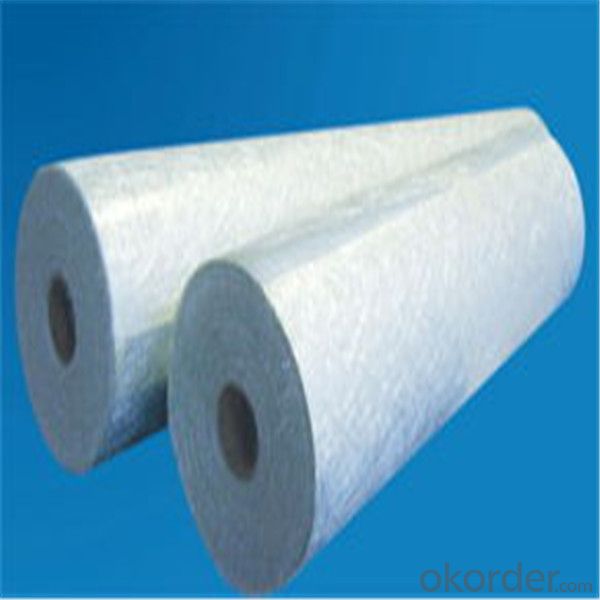
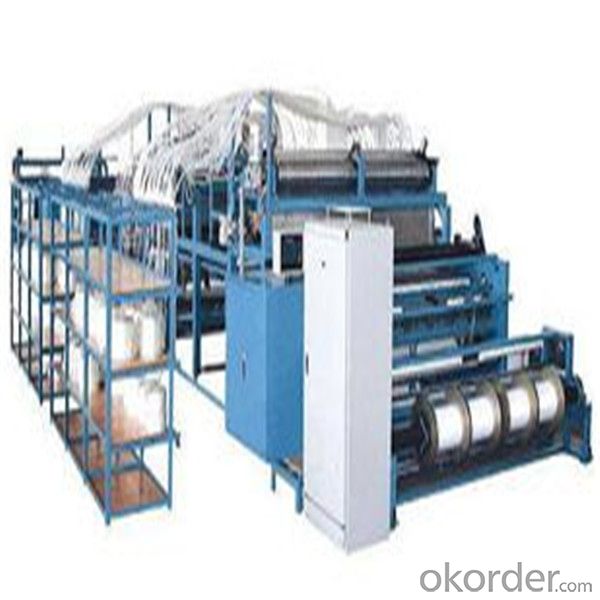
- Q:How does the orientation of fiberglass chopped strand affect its performance?
- The orientation of fiberglass chopped strand has a significant impact on its performance. In the manufacturing process, fiberglass strands are cut into small pieces, known as chopped strand, and these pieces can be oriented in different ways to achieve specific performance characteristics. The orientation of chopped strand affects the strength, stiffness, and overall mechanical properties of fiberglass composites. When the strands are randomly oriented, the resulting composite exhibits isotropic properties, meaning it has similar strength and stiffness in all directions. This random orientation can provide good overall strength but may lead to reduced performance in specific loading directions. On the other hand, when the strands are aligned in a specific direction, such as in unidirectional or aligned strand mats, the resulting composite exhibits anisotropic properties. This means that the composite will have different strength and stiffness properties in different directions. Unidirectional composites, for example, have high strength and stiffness along the fiber alignment direction but are weaker in other directions. The orientation of chopped strand also affects the interfacial bonding between the fibers and the resin matrix. In randomly oriented chopped strand composites, the fibers are more likely to be dispersed evenly throughout the matrix, improving the overall bonding and load transfer between the fibers and the matrix. In contrast, unidirectional composites may have areas with poor bonding if the fibers are not fully impregnated with the resin. Overall, the orientation of fiberglass chopped strand plays a crucial role in determining the performance of fiberglass composites. Manufacturers can tailor the orientation to meet specific design requirements, balancing the desired mechanical properties and cost considerations.
- Q:How does the processing temperature affect fiberglass chopped strand?
- The properties and performance of fiberglass chopped strand are significantly influenced by the processing temperature. If the temperature is too low, the resin may not fully melt and evenly distribute on the strands, leading to poor wetting and adhesion. Consequently, the mechanical properties and bonding between the chopped strand and resin matrix may be compromised. Conversely, excessive heat can cause degradation of the fiberglass strands, resulting in reduced strength and stiffness. Additionally, fiber breakage due to high temperatures can adversely affect the overall mechanical properties of the composite material. Moreover, the processing temperature has an impact on the viscosity of the resin. Higher temperatures decrease viscosity, facilitating better wetting of the chopped strand and leading to improved mechanical properties in the final product. Furthermore, the curing time of the resin is influenced by the processing temperature. Higher temperatures accelerate the curing process, which can be beneficial in terms of reducing production time. However, careful control of temperature is necessary to prevent premature curing or overheating, as these can lead to incomplete curing, voids, and defects in the final composite. In conclusion, the processing temperature is crucial for achieving high-quality fiberglass chopped strand. It affects wetting, adhesion, mechanical properties, curing time, and overall integrity of the composite material. Therefore, optimizing the processing temperature is necessary to ensure desired properties and the production of top-notch fiberglass composite products.
- Q:What are the typical impact resistance properties of chopped strand composites?
- Chopped strand composites are known for their excellent impact resistance properties. These composites effectively absorb and distribute impact energy, reducing the risk of damage or failure. The long, continuous fibers provide strength and stiffness, while the matrix material holds the fibers together and evenly transfers the load. This combination creates enhanced impact resistance compared to other materials. The impact resistance properties of chopped strand composites can vary based on factors like fiber type, length, matrix material, and manufacturing process. However, overall, these composites exhibit high resistance to impact and can withstand significant loads without breaking. Chopped strand composites are widely used in industries such as automotive, aerospace, construction, and sports equipment. They are chosen for applications that require strong impact resistance, such as crash structures, protective helmets, and structural components. These composites reliably withstand impact and protect against damage. In summary, chopped strand composites possess typical impact resistance properties that make them highly suitable for applications requiring strength and durability. Their efficient absorption and distribution of impact energy make them a reliable choice across various industries.
- Q:What are the typical creep properties of chopped strand composites?
- The typical creep properties of chopped strand composites include a low creep rate, high creep resistance, and minimal creep deformation under sustained loading. These properties are a result of the reinforcement provided by the chopped strands, which enhance the composite's overall strength and stiffness, reducing the likelihood of creep occurring.
- Q:How is fiberglass chopped strand used in the wind energy industry?
- Fiberglass chopped strand is extensively used in the wind energy industry for reinforcing composite materials used in manufacturing wind turbine blades. It is mixed with resin to create a strong and lightweight composite, providing the necessary structural integrity and stability required for the blades to withstand high wind speeds. The chopped strands enhance the overall strength and durability of the blade, ensuring optimal performance and longevity in generating clean and renewable energy from wind.
- Q:Is fiberglass chopped strand compatible with different recycling processes?
- Certainly! Fiberglass chopped strand is indeed compatible with diverse recycling procedures. This adaptable material, fiberglass, can undergo recycling through an array of methods, including mechanical recycling, chemical recycling, and thermal recycling. In the mechanical recycling approach, the fiberglass chopped strand can be shredded and transformed into fresh fiberglass products. Conversely, chemical recycling involves disassembling the fiberglass into its fundamental constituents, which can then be utilized to generate novel materials. In contrast, thermal recycling utilizes heat to convert the fiberglass into energy or other beneficial byproducts. Through these distinct recycling processes, the fiberglass chopped strand can be efficiently recycled and repurposed, eliminating the need for landfill disposal and thus making it an environmentally-conscious alternative.
- Q:Is fiberglass chopped strand compatible with different curing methods?
- Yes, fiberglass chopped strand is compatible with different curing methods. Fiberglass chopped strand is commonly used as a reinforcement material in various industries such as automotive, construction, and aerospace. It can be used in conjunction with different curing methods, including thermosetting and thermoplastic processes. In thermosetting processes, such as resin transfer molding (RTM) or vacuum infusion, the fiberglass chopped strand is typically impregnated with a thermosetting resin, which is then cured at elevated temperatures. The resin undergoes a chemical reaction, resulting in a hardened and durable composite material. Fiberglass chopped strand is compatible with these processes as it provides strength and reinforcement to the cured composite. In thermoplastic processes, such as injection molding or compression molding, the fiberglass chopped strand is mixed with a molten thermoplastic resin, which solidifies upon cooling. The chopped strand reinforcement enhances the mechanical properties of the thermoplastic material, making it stronger and more resistant to deformation. Fiberglass chopped strand is compatible with these processes as it can be easily incorporated into the molten resin and distributed evenly throughout the molded part. Overall, fiberglass chopped strand is a versatile material that can be used with different curing methods, providing enhanced strength and durability to the final product. Its compatibility with various processes makes it a preferred choice in industries where high-performance composites are required.
- Q:Can fiberglass chopped strand withstand high temperatures?
- Yes, fiberglass chopped strand can withstand high temperatures.
- Q:Can fiberglass chopped strand be used in the manufacturing of electrical enclosures?
- Yes, fiberglass chopped strand can be used in the manufacturing of electrical enclosures. It provides excellent insulation properties and high strength, making it suitable for protecting electrical components. Additionally, fiberglass is corrosion-resistant and can withstand various environmental factors, making it a viable material for electrical enclosure manufacturing.
- Q:Is fiberglass chopped strand resistant to moisture?
- Yes, fiberglass chopped strand is generally resistant to moisture. The strands are manufactured with a special coating that helps protect them from absorbing water, making them suitable for use in wet or humid environments. However, it is important to note that prolonged exposure to moisture can still cause degradation over time, so proper precautions should be taken to ensure its long-term durability.
1. Manufacturer Overview |
|
|---|---|
| Location | |
| Year Established | |
| Annual Output Value | |
| Main Markets | |
| Company Certifications | |
2. Manufacturer Certificates |
|
|---|---|
| a) Certification Name | |
| Range | |
| Reference | |
| Validity Period | |
3. Manufacturer Capability |
|
|---|---|
| a)Trade Capacity | |
| Nearest Port | |
| Export Percentage | |
| No.of Employees in Trade Department | |
| Language Spoken: | |
| b)Factory Information | |
| Factory Size: | |
| No. of Production Lines | |
| Contract Manufacturing | |
| Product Price Range | |
Send your message to us
Flame Retarded Chopped Strand Fiberglass Mat
- Loading Port:
- Tianjin
- Payment Terms:
- TT OR LC
- Min Order Qty:
- 100 m.t.
- Supply Capability:
- 10000 m.t./month
OKorder Service Pledge
OKorder Financial Service
Similar products
New products
Hot products
Related keywords
